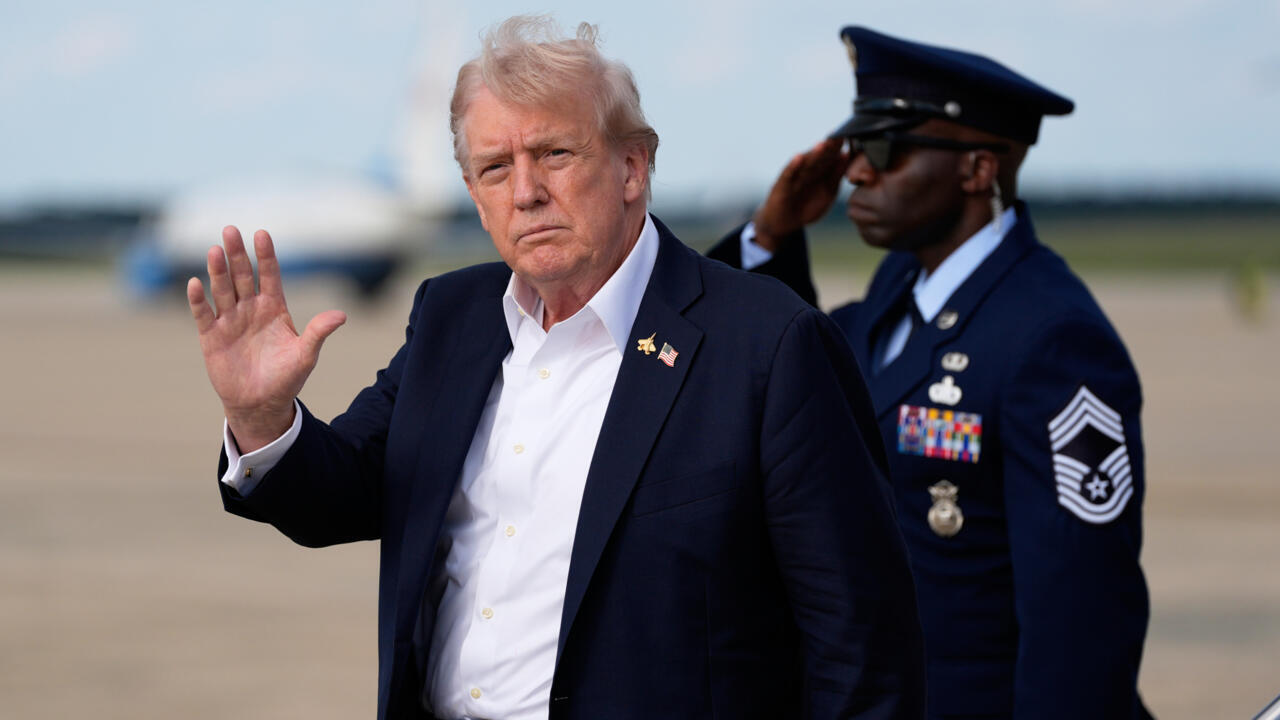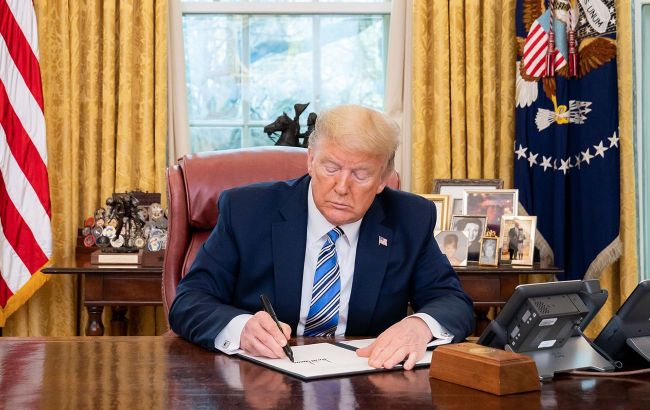President Donald Trump said Saturday that he will send troops to Portland, Oregon, and to immigration detention facilities around the country, authorizing “Full Force, if necessary” and escalating a campaign to use the U.S. military against Americans that has little modern precedent. Trump said in a social media post that he was directing Defense Secretary Pete Hegseth to provide troops to what he dubbed “War ravaged Portland” as well as “any of our ICE Facilities under siege from attack by Antifa, and other domestic terrorists.”
Saturday’s announcement appeared likely to set up a first test for a White House effort targeting left-wing protest groups. It came just days after Trump signed an executive order directing the nation’s full counterterrorism apparatus against domestic political opponents despite long precedent restricting such a move.
Advertisement Advertisement
Advertisement
Advertisement Advertisement
Right-wing politicians have long criticized Portland for the way it has handled racial-justice protests as well as its homeless population, tolerating encampments in the central part of the city. But Trump will again encounter the dynamic he faced when he deployed the National Guard in Los Angeles — a military activation in a state run by a Democratic governor who objects to the decision and could have grounds to fight it in court.
Trump’s announcement, which was posted on Truth Social while the president was at his private golf club in Northern Virginia, appeared to have come as a surprise to the Pentagon, with several officials saying they know little more than what the president included in his post.
One official familiar with the discussion Saturday said defense officials were seeking clarity on what Trump desires. The official, like others in this article, spoke on the condition of anonymity to speak frankly about private planning.
Advertisement
The Pentagon released a statement a few hours later, saying defense officials “stand ready to mobilize U.S. military personnel in support of DHS operations in Portland at the President’s direction.”
The statement, by spokesman Sean Parnell, said the “Department will provide information and updates as they become available.”
Another person familiar with ongoing discussions said midday Saturday that some Pentagon officials had discussed troops being sent to Portland at some point but were scrambling to make sense of what’s next.
Advertisement Advertisement
“You know what I know,” that person said, alluding to the president’s announcement on social media.
Among the uncertainties, it was not immediately clear whether Trump plans to deploy active-duty troops or National Guard members, or both, to Portland. As is the case in similar discussions with other cities, there are legal limits to how he can do so.
Advertisement
There was also no clarity about the timing of any potential deployment.
Asked for more details about the potential deployment, the White House did not answer questions but responded with a list of incidents that had recently taken place outside Portland’s ICE field office, including federal charges of arson, assaulting a police officer and resisting arrest.
“Despite the crime and neighborhood pushback caused by the months-long protest, Oregon Democrats still refuse to do anything about it,” the White House said in a statement.
Protesters have been demonstrating for weeks at an ICE processing center in the city in objection to Trump’s immigration enforcement efforts. The Department of Homeland Security on Friday said that “rioters in Portland, Oregon have repeatedly attacked and laid siege” to the facility.
Advertisement Advertisement
Advertisement
Advertisement Advertisement
Demonstrators have gathered outside the facility as far back as 2018, when Trump’s family separation policy inspired protests and an encampment. Multiple people were arrested when officials cleared the encampment that June.
Protests outside the facility reignited this June, with the Portland Police Bureau declaring a riot after demonstrators blocked the driveway and threw objects like rocks and bricks at the facility and federal agents, according to local news media accounts and social media videos. Portland police arrested more than 20 people connected to the protests after multiple federal officers were injured.
But on Saturday, the streets outside the Portland ICE facility remained largely empty in the hours after Trump made his announcement. Two homeless men slept on the sidewalk. A handful of passersby took photographs of the building, and a few talked to each other about how their experiences felt nothing like the “war-ravaged” city described.
Advertisement
Trump has regularly singled out Portland as he portrays Democratic-run cities as hotbeds of lawlessness, including on Thursday in the Oval Office as he signed the executive order.
“Take a look at Portland sometime. These are wild — these are crazy people, and they’re trying to burn down buildings, including federal buildings,” Trump said. “We’re going to get out there and we’re going to do a pretty big number on those people in Portland that are doing that. They’re professional agitators and anarchists. They’re actually anarchists.”
Advertisement Advertisement
Oregon Gov. Tina Kotek (D) was one of 19 Democratic governors who signed a letter to Trump last month opposing his deployment of the National Guard over governors’ objections.
Advertisement
On Saturday, she said in a statement that “my office is reaching out to the White House and Homeland Security for more information. We have been provided no information on the reason or purpose of any military mission. There is no national security threat in Portland. Our communities are safe and calm.”
She did not explicitly say whether she would fight a deployment, and a spokesman for Kotek did not immediately respond to a request for comment.
Both local and state-elected Oregon officials rejected Trump’s plan.
“The number of necessary troops is zero, in Portland and any other American city. Our nation has a long memory for acts of oppression, and the president will not find lawlessness or violence here unless he plans to perpetrate it,” Portland Mayor Keith Wilson (D) said in a statement. Wilson was elected last year on a platform of moving homeless Portland residents into a temporary shelter.
Advertisement Advertisement
Advertisement
Advertisement Advertisement
Wilson said at a news conference Friday evening that the city had seen a “sudden influx” of federal agents in recent hours, including armored vehicles, which Wilson called a “big show.” Wilson was flanked by other city and state officials, who said it wasn’t clear which agency the federal authorities were from but urged the public stay calm and refuse to “take the bait.”
U.S. Sen. Jeff Merkley (D-Oregon), who has criticized Trump’s domestic military deployments, said Saturday on X that the president “wants to stoke fear and chaos and trigger violent interactions and riots to justify expanded authoritarian control. Let’s not take the bait! Portland is peaceful and strong and we will take care of each other.”
Violent crime and homicide rates in Portland have been declining over the past few years after reaching record highs for the past decade. According to FBI data between 2014 and 2024, the violent crime rate peaked in 2021 while the homicide rate peaked in 2022. The total number of violent crimes have so far been lower in the first seven months of this year, compared with the same period in 2024, according to data from the Portland police department.
Advertisement
Trump’s announcement came after Attorney General Pam Bondi said Friday that she ordered Justice Department agents to guard ICE facilities amid “continued onslaught of violence” and that she directed counterterrorism task forces to investigate the attacks.
Bondi’s announcement, made in a social media post with few details about which federal law enforcement agencies would be aiding the effort, came after a shooting at an ICE field office in Dallas. One immigrant detainee was killed and two more were injured Wednesday. Investigators said the gunman wanted to shoot ICE officers but shot three immigrants instead.
Advertisement Advertisement
“The Department of Justice will not stand idly by in the face of such lawlessness,” Bondi wrote on X.
Advertisement
She said she was “deploying DOJ agents to ICE facilities” to safeguard federal agents and property, and to make arrests.
Bondi also said she was ordering the Joint Terrorism Task Forces “to disrupt and investigate all entities and individuals engaged in acts of domestic terrorism, including the repeated acts of violence and obstruction against federal agents.”
Stephen Miller, the White House deputy chief of staff, responded Friday night to Bondi’s post, writing on X, “Assets mobilizing. This campaign of terrorism will be brought down.”
Trump deployed National Guard members to Los Angeles this year over the objection of California Gov. Gavin Newsom (D) and, more recently, deployed them to Washington.
Advertisement
Critics of Trump’s domestic deployments have said they are a needless militarization of law enforcement activity and that they potentially endanger U.S. citizens’ lives and politicize the military.
Advertisement Advertisement
Advertisement Advertisement
The California deployment was contested by Newsom and his team in a lawsuit, and District Court Judge Charles R. Breyer ruled this month that the Trump administration violated the Posse Comitatus Act by placing the troops involved into law enforcement roles.
The Trump administration appealed the decision. In a brief order, a three-judge panel with the U.S. Court of Appeals for the 9th Circuit granted the Trump administration’s motion to stay the case until its argument could be heard in greater detail.
Advertisement
National Guard troops in Washington — whose federalized, non-state status gives Trump more leeway to act — have mostly acted in support roles to law enforcement and other federal officers.
In June, Trump seized control of the California National Guard over the objections of Newsom, a Democratic political rival, deploying about 4,000 Guard members and a battalion of about 700 active-duty infantry Marines to Los Angeles after protests against Immigration and Customs Enforcement raids turned violent in a few cases. He did so under authorities in Title 10 of federal law, which prohibits troops from performing any law enforcement missions.
Trump also could invoke the Insurrection Act to send active-duty troops to Portland, but such an action is sure to prompt a fierce reaction from political opponents and some military officials and be contested in court. The law allows the president to send military forces if there is an armed rebellion against the United States but has rarely been invoked in U.S. history.
Advertisement Advertisement
Advertisement
It is unclear what Trump meant by allowing “Full Force,” a phrase not typically used in the Pentagon. But in linking his announcement to antifa, he appeared to equate protesters who oppose ICE to terrorists, and therefore justifying the move to seek stronger action against them. Trump on Monday designated antifa a domestic terrorist organization, citing a “pattern of political violence designed to suppress lawful political activity and obstruct the rule of law.”
The legal significance of the terrorism designation is unclear, both because domestic political organizations are protected from terrorist designations under the First Amendment and because antifa itself is not a unified organization.
Antifa is a political protest movement made up of unaffiliated groups connected by their militant — and sometimes violent — opposition to fascism and other forms of extreme right-wing ideology. Some within the movement also espouse anti-capitalist and anti-government views.
Advertisement
The Washington Post reported in August that, for weeks, the Trump administration had been planning a military deployment to Chicago that could he used as a model in other cities, prompting a fierce backlash from Gov. JB Pritzker, a Democrat, and other officials. The effort could have had Trump federalizing the National Guard, as he did in California, or sending in active-duty troops.
Trump eventually backed off the plan, saying he wanted to crack down on crime in cities where there were governors willing to cooperate. Smaller deployments in Louisiana and Memphis were later approved with support from Republican governors in those states.
The deployment to Memphis is expected to arrive in the coming days.
[SRC] https://www.washingtonpost.com/politics/2025/09/27/trump-military-portland-ice/
 Visit the website
Visit the website





